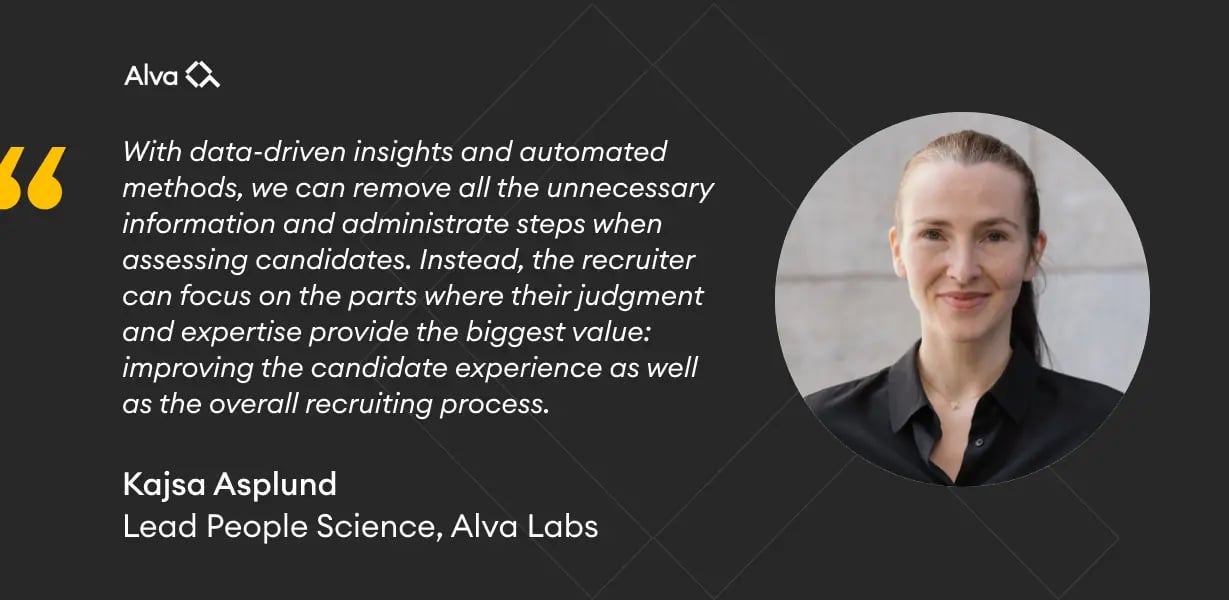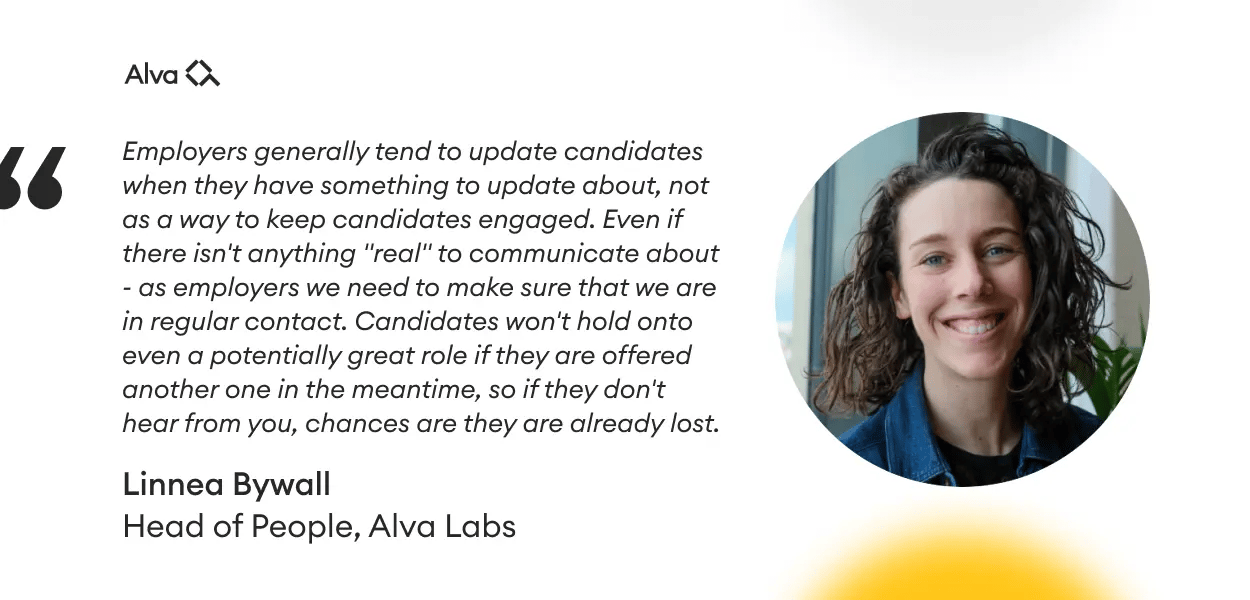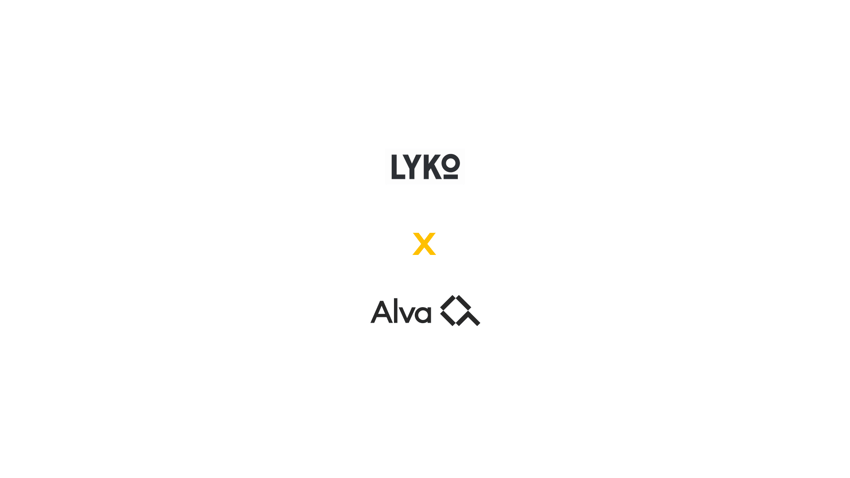But delivering a stellar candidate experience isn't as simple as writing a great job description or screening applicants quickly. A powerful candidate experience means you need to consistently delight and deliver a hiring process that is transparent, professional, and enjoyable. Your recruitment process should match candidates' expectations of a modern and forward-leaning organisation. Sounds great in theory, but what does this mean in practice? Let's dive in and find out.
What does candidate experience mean for talent acquisition?
"We spend a lot of time designing the bridge, but not enough time thinking about the people who are crossing it." Dr. Prabhjot Singh, Director of Systems Design at the Earth Institute
When companies begin the hiring process, many see a funnel: an X amount of stages a candidate must pass through to qualify for the role. However, candidates only see a gazillion hoops they must jump through until they get an offer or rejection.
Employers and candidates need to be on the same page. For job seekers, the hiring experience is less complicated than what employers make it out to be.
- "Why do you want this job?' You know why I want this job … because I need to feed my family and have health insurance …"
- — Reddit user featured in HRB's job seeker sentiment study
Research has repeatedly found candidate sentiment toward the job process to be overwhelmingly negative, with candidates going through the motions because they must, not because they enjoy the experience.
According to TalentBoard the top three reasons for negative candidate sentiment are:
-
- The recruiting process took too long
- The candidate's time was disrespected
- Poorly-communicated expectations
- Salary package inadequate
Talent and recruitment leaders need to shift the focus away from overcomplicating the hiring process and get back to what matters most to candidates — to be treated like humans and work in a role that aligns with their sense of purpose. And to do so in the most efficient, effective way possible.
The first and most critical step toward offering an exceptional candidate experience is to understand what candidates want, understand what your team needs, and then find a middle ground.
.webp?width=1250&height=600&name=linnea%20quote%20guide%20mar%202024%20(2).webp)
How to make candidates love your hiring process
If your hiring process is too slow, you might miss out on top talent. If your hiring process is too ad-hoc, it might lead to a bad hire. So how can you optimise your recruitment processes and make it candidate-friendly?
Below, we will cover six incredibly effective ways to make candidates engage with your recruitment process:
-
-
Structure and plan ahead
-
Simplify and streamline the recruitment process
-
Provide feedback quickly, irrespective of whether the candidate made the cut or not
-
Transparent communication
-
Create value at each step of the hiring process
-
Empathize and humanise for a relatable experience
-
Treat candidates fairly and equally
-
Structure and plan
Structuring and planning your recruitment process enables you to save time, align with the job criteria early on, and provide a reliable, accurate selection process - both for the candidate and for the recruiter.
This means:
-
- Ensuring that all candidates are treated fairly from the get-go. An effective way to reduce the possibility of bias is to use candidate assessments as a first screening step, rather than CV screening.
- Use the most accurate methods to their best advantages. This entails understanding which methods predict job performance and making sure candidates are measured on objective parameters appropriate to the hiring step.
- Provide a set process that you can be open and transparent about. This means no surprise interviews or "extra" hoops for candidates to jump through.
- Set up pre-determined communication points to always maintain touch. An easy way to do this is to use an ATS that can help ensure candidate communication stays smooth.
- Know WHAT to assess and HOW to assess it. That will save you precious time!
How we prepare our candidates ahead: We are fans of structured interviews. Before an interview, the applicant gets a full debrief of what to expect in the session and why we are conducting the interview the way we are. We even provide sample questions so the candidate knows what to expect ahead, minimising the room for surprises. Why? Simply put, we want the candidate to succeed; we want them to be comfortable and perform to the best of their ability.
Simplify and streamline for efficiency
A long and arduous hiring process is off-putting for candidates, especially if they have to repeat the same information, go through multiple interviews, or wait months to hear back from you. To make your hiring process more efficient and user-friendly, you should simplify and streamline your hiring steps, leveraging tools and platforms that are easy to access and use, removing unnecessary or mundane tasks, and reducing the time and effort required from the candidates.
Key tools include:
-
- A reliable ATS to automate candidate communications and keep track of applications
- A high-quality candidate assessment tool allows recruiting managers to identify quality talent faster and save time in the whole recruitment process
Alva's Lead People Science, Kajsa Asplund, explains:

But word of caution! While technology can undoubtedly improve the candidate experience, it won't rescue your hiring process if it's bad.
Feedback quickly
Slow feedback-or worse, no feedback at all- can destroy your candidate experience. Not to mention, ghosting candidates can harm your employer's brand, as candidates are more likely to report a negative experience and leave a bad review.
To avoid frustration and uncertainty, set clear expectations and timelines at the beginning of the job process and update the candidates on progress and next steps.
Hot tip: As hiring processes become more complex and multilayered, candidates often pour hours of their free time into the process. Increasingly, there is a demand to understand why candidates did or did not move forward in the hiring process. If you can provide feedback to all applicants, the candidate is more likely to be positive towards you as a company, even if they don't get hired.
The bottom line is that you want candidates to give you a great NPS score and apply again, regardless of whether they got an offer or not. Your hiring process needs to reflect that.
Communicate honestly
Candidates want to be treated like humans and not just a cog in the machine. This means communicating transparently about where they stand in the process. With 58% of candidates getting ghosted, one of the most frequent reasons employers receive a bad candidate NPS score is because of poor communication.

Ensure candidates receive value from each step of the job process
Candidates want to show who they are and what they can do. They also want to show off their skills in more ways than one.
This means revisiting your hiring process and asking yourself some tough questions about your evaluation steps. What is necessary and what can be cut?
Remember:
-
- Not all methods will equally help you predict performance.
- Not all methods can provide a good candidate experience
- Not all methods will suit every recruitment- but some might never be suitable.
The bottom line is, where and when you use a method is paramount.
For example, when Grace Woods joined OneFlow as Talent Acquisition Lead, she realised just how long their interview process was, with some teams going through multiple interviews. Quickly, she merged two interviews into one and tightened the feedback loop for interviews.
- "It's worked amazingly well. And I think when you have a strong process, you don't need to meet the same person five times just to confirm what you already think the first time you've met them."
As for how you find out which methods work, you need to understand what actually predicts performance.
Solution: Use an assessment tool to objectively evaluate candidates based on their competencies, personality, logical reasoning abilities, and potential to thrive in the role. This means that talent is assessed for their potential and individuality at the earliest stage of the recruitment process instead of using a more biased method like the CV to evaluate their role suitability.
Empathise and humanise
We've all been in the candidate's shoes. Going through the motions of a job process is taxiing, frustrating, and downright nerve-wracking at times. Nowadays, people don't want to just work for companies. They want to work for people-centred brands. That means treating candidates with humility and empathy.
A perfect example: the job interview.
After public speaking, the job interview is people's second most nerve-wracking experience. In fact, going for a job interview is worse than going on a first date, with 93% admitting they felt more nervous before an interview.
This places the responsibility on the interviewers' shoulders to make candidates feel at ease and focused on answering questions to the best of their ability.
Some ways to do this:
-
- Factor time at the beginning for rapport-building. This makes candidates feel more relaxed, treating the interview more as a friendly conversation than an interrogation.
- Throw in a small fact about yourself to show you're also human and make the interview seem less intimidating.
- Acknowledge that being nervous is ok. Reassuring the candidate can go a long way in making candidates feel more at ease.
Ensure fair and equal treatment
One candidate might go through a version of the job process. The hiring manager may discuss the candidate's profile with their superior, who calls a friend of a friend to get some inside information and then decides to hold their own interview. In this situation, there's an inherent risk of picking the wrong candidate to progress with.
It goes without saying that you should be minimising biases throughout your hiring process. For example, at the interview stage, ensure there's a clear structure in place, with a list of set questions beforehand and clearly defining scoring criteria. Try not to veer off the script, as it can potentially introduce bias into the evaluation process.
How to make candidates love your hiring process
-
- Know WHAT to assess and HOW to assess it. That will save you precious time!
- Evaluate all candidates on the same parameters. That will make the process more fair.
- Use the right methods. That will give you the right data points.
- Be transparent and communicate. That will keep even the people you reject happy.
Alva's candidate assessment tool: built for candidates, loved by candidates
For companies to stay competitive, they need to attract and successfully hire the best people; however, extraordinary talent is always in high demand. To keep your top candidates engaged, you must provide an exceptional candidate experience through a seamless, transparent process. Nothing less.
Alva's candidate assessment tool is loved by candidates and recruiters:
-
- Candidates own their test results and can re-share them with other companies
- +90% test completion rate and average time to completion is less than two days
- Full transparency with instant feedback through our candidate report
- Adaptive tests that take less than 15 minutes to complete and can be paused if the candidate gets interrupted.
- UX that looks just as great on mobile as on desktop
- Live support chat for the candidates on the platform
From brands like Happy Socks and Noba to SEB, Alva has helped enterprise-stage companies create a seamless, candidate-friendly hiring process.
Don't take our word for it!
Watch how we transformed talent acquisition with Happy Socks in the video below:
Let us show you how Alva can support you in building a workforce that will have an impact on your company today, and adapt for tomorrow.

Resources:


.webp?width=1250&height=600&name=CTA%20blog%20mar%202024%20(2).webp)




